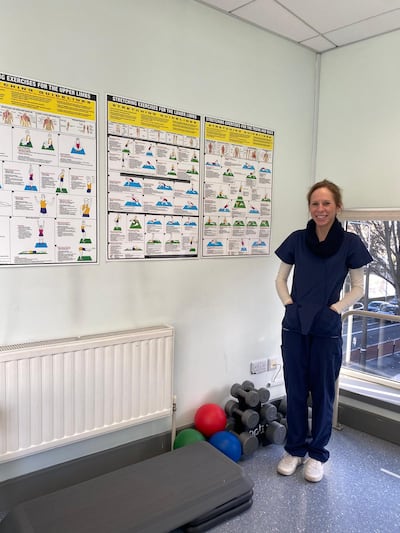Homeless people would value and participate in exercise programmes that are accessible and safe for them, according to a new study by Trinity College Dublin (TCD) researchers. The study looked at how a drop-in exercise programme held in Merchants Quay Ireland day services for homeless people in Dublin gave people the opportunity to partake in strengthening exercises once a week.
“We ensured the programme was fun and enjoyable, with music playing and as much lighthearted banter as possible,” explains Dr Julie Broderick, associate professor of physiotherapy at the school of medicine in TCD. “There was great camaraderie, lots of laughs and a playlist for regular attendees.”

Research physiotherapist Fiona Kennedy and her assistant offered one-on-one exercises using hand-held weights, steps and stretching bands. “The exercises were targeting frailty because many homeless people in their 20s, 30s and 40s have the physical frailty of people in their 70s and 80s,” explains Dr Broderick.
Physical assessments of homeless people in St James’s Hospital have found that many struggle to climb stairs and rely on mobility aids to move around. This high level of frailty in homeless people can also make it harder for them to move out of homeless services as the accommodation they require (ie, ground-floor accommodation or apartments with lifts to upper floors) are more difficult to find.
RM Block
The aforementioned 12-week programme at the Riverbank Centre in Dublin 8 also offered participants a high-protein nutritional drink following the exercise class as, according to Dr Broderick, there is a window of opportunity to build up muscle mass directly following exercise. “We got very positive feedback from participants about how exercises improved their mental health, their sleep and how some of them used drugs/alcohol less or later in the day as a result of partaking in the classes,” she explains.
Many participants spoke about the challenges of homelessness during the exercises, their physical limitations and mental struggles. However, they also expressed their appreciation for the exercise classes and their desire to get fit.
One participant said doing the exercises was “like a free drug”, while another said that “you feel you have done something for the day”.
“I needed that; my head was a bit wrecked this morning. I’ll be back,” said another.
However, due to the fact that the drop-in classes were only available one day a week, there were no statistically significant changes to physical ability or physiological strength in participants. The study did find that those most likely to return to do further drop-in classes were older, female or those in more stable circumstances regarding their addiction and/or housing situation.

Following on from the 12-week programme, the Trinity researchers have since offered a women-only exercise programme four days a week in Dublin city centre and another drop-in exercise programme in a homeless setting in Ballyfermot, Dublin. “I’d like to see classes like these mainstreamed for homeless people so it becomes the norm to provide targeted exercises for groups which are excluded,” says Dr Broderick.
Many people using homeless services aren’t physically fit enough to join community-based exercise programmes. Cost is also a barrier and they find it difficult to attend timetabled hospital-based exercise programmes.
“The benefit of the exercise programmes that we offer is that we come to where they use the services. These targeted interventions delivered in a suitable way could bridge the gap for this group so that they could become stronger and fitter to be able to join community-based sports activities in the future,” says Dr Broderick. “Everyone, regardless of their circumstances, should have the opportunity to improve their physical health by taking part in suitably designed exercise programmes.”
- Sign up for push alerts and have the best news, analysis and comment delivered directly to your phone
- Join The Irish Times on WhatsApp and stay up to date
- Listen to our Inside Politics podcast for the best political chat and analysis

















